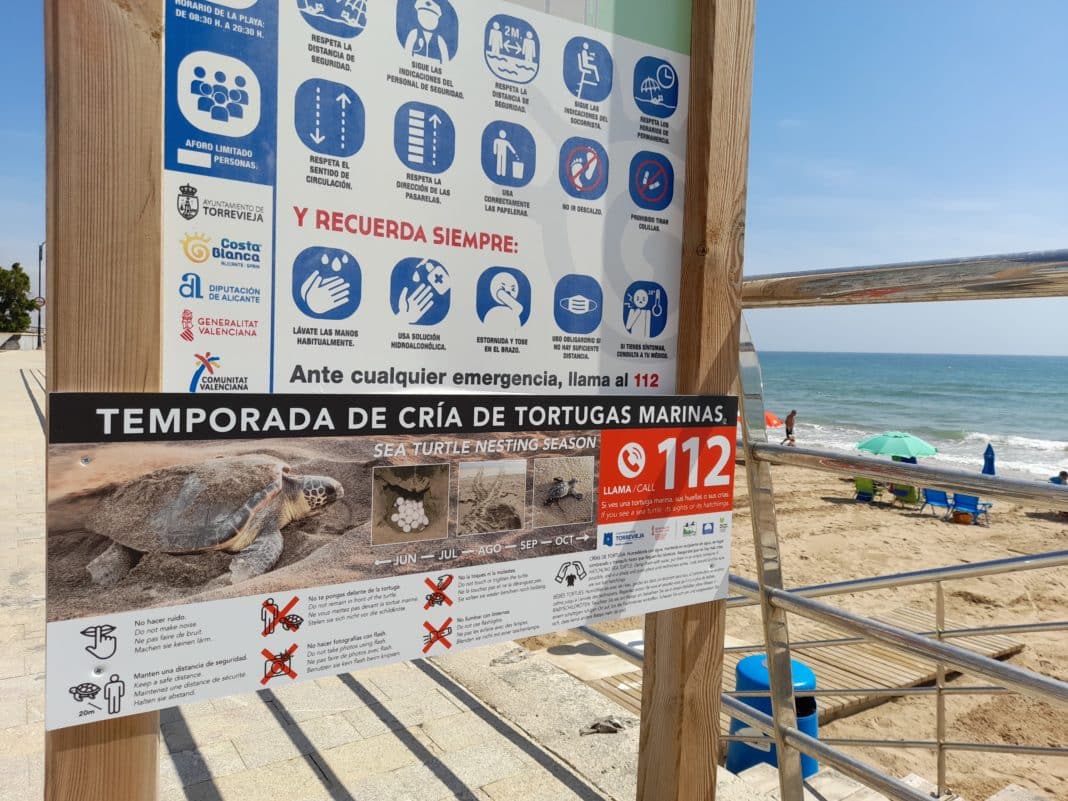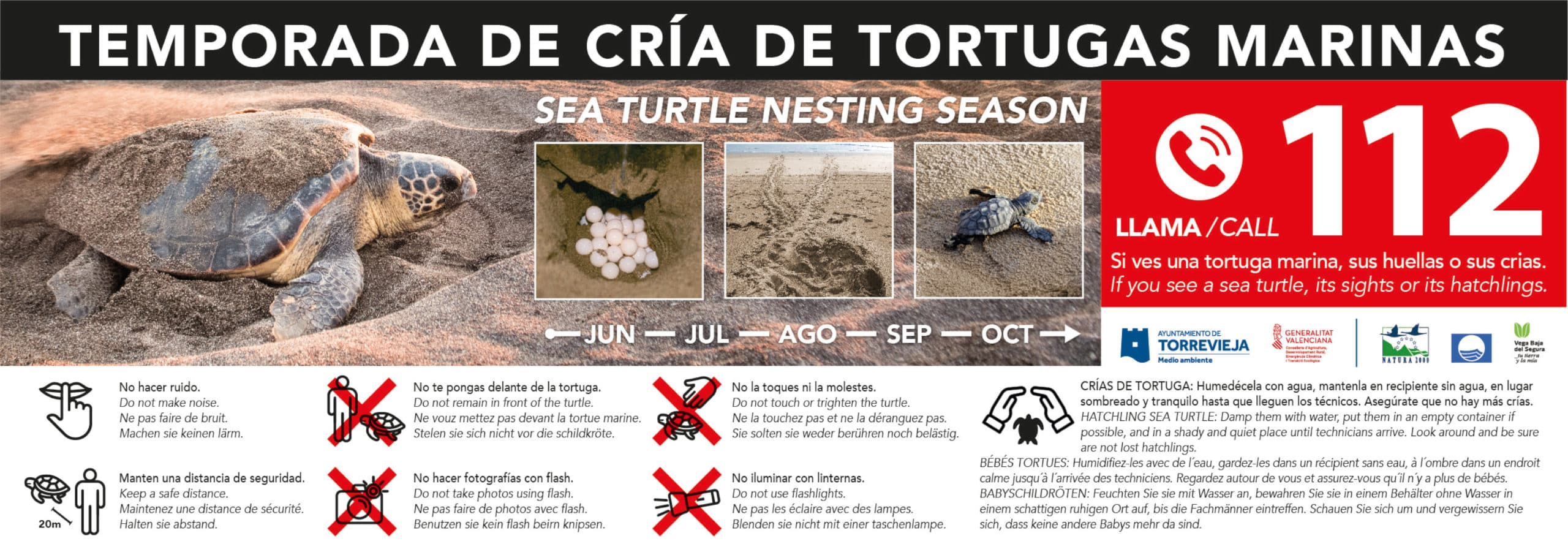- The Department of the Environment has put up posters on the beaches in which it is explained how to act in case of finding nesting of sea turtles, by calling 112
In recent years, loggerhead turtles have scrambled up onto our local beaches to lay their eggs. They were particularly abundant in Torrevieja during the summer of 2015, but, their attempts have been many more.
In the Torrevieja Maritime District that ranges from the mouth of the Segura river to El Mojón (municipal terms of Guardamar del Segura, Torrevieja, Orihuela and Pilar de la Horadada), there have been a total of 6 recorded events, two of which occurred last year, 2020 on the Orihuela costa, although neither of them were successful.
During the month of June the peak period gets underway, in which turtles will venture onto the beaches at night to spawn. The period ends in October, where occasionally it is still possible to find baby turtles from nests that had not been located during the previous months.
Every year the Torrevieja Council carries out information campaigns every year for all users of the beaches, particularly for services such as beach cleaning that operates at night, and for Local Police and Civil Guard, so that everyone knows how to act correctly, so that everything goes well.
Antonio Vidal, Councilor for the Environment and Beaches, has said that this year, he will be installing information posters at the main accesses to the beaches, showing the general protocol to follow, which starts with a call to 112, and that includes a series of recommendations to avoid disturbing the animal while it spawns or attempts to do so. He says that it is essential not to approach the turtle, not make noise or dazzle the animal and avoid photographing it with flash.
By calling 112 , a team of professionals from the Ministry of the Environment, the University of Valencia and the Oceanogràfic of Valencia will deal with such occurrences.
Quick action is essential for the location of the nests and the protection of the eggs, in highly touristy beaches that the next day will be full of users. It also allows the collection of an important series of biological data on sea turtles (such as their genetic characterization or their tagging with satellite emitters) that ultimately contribute to a better understanding of the process of recolonization and consolidation of new breeding beaches that is taking place during in recent years on the shores of the Spanish Mediterranean.
Everyone’s involvement and the knowledge of how to act correctly can help consolidate Spanish beaches as a laying and breeding area for sea turtles.






